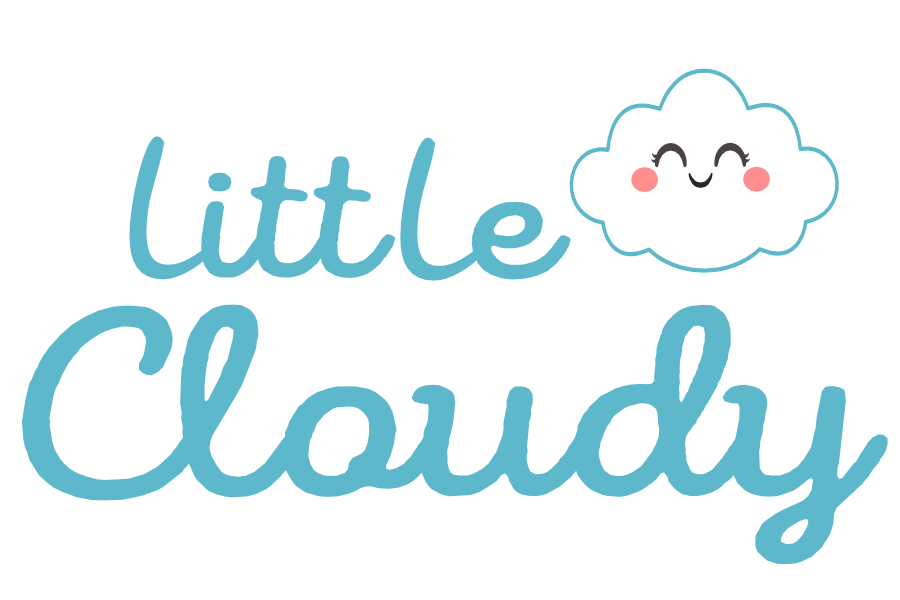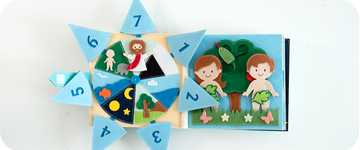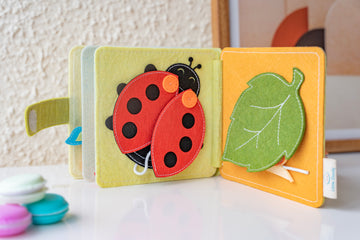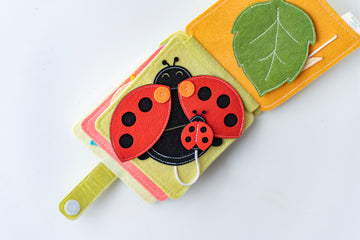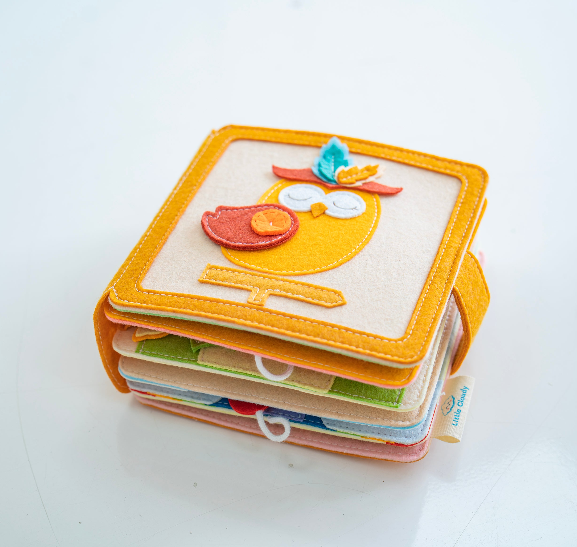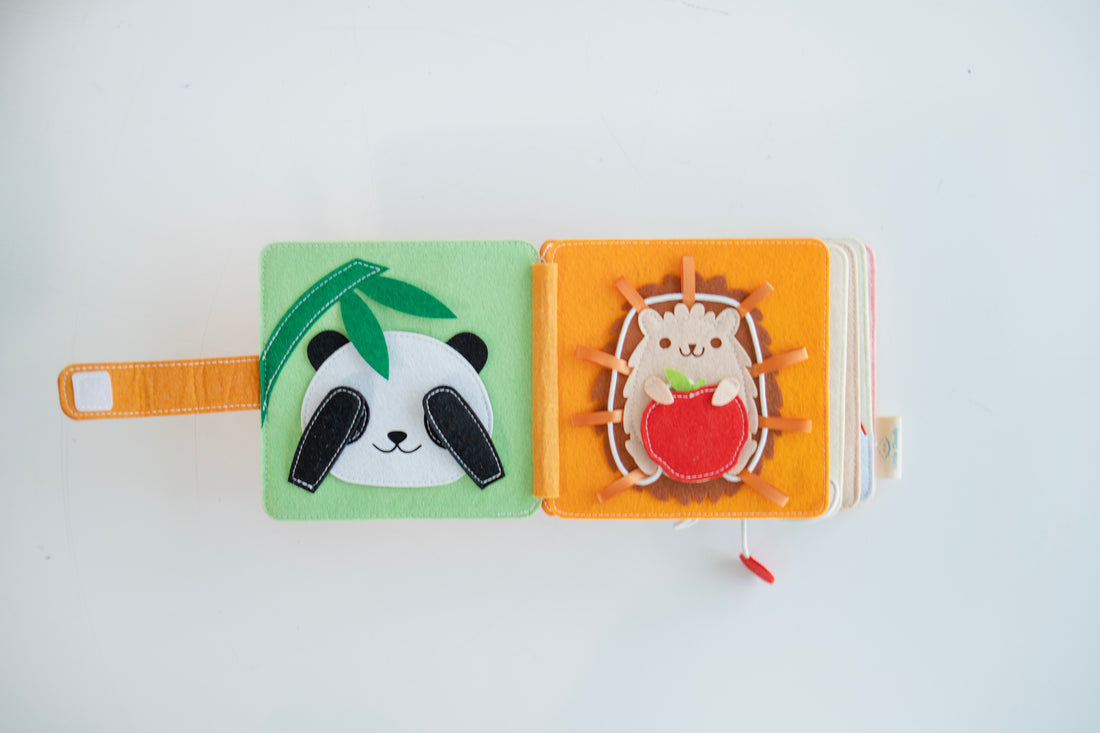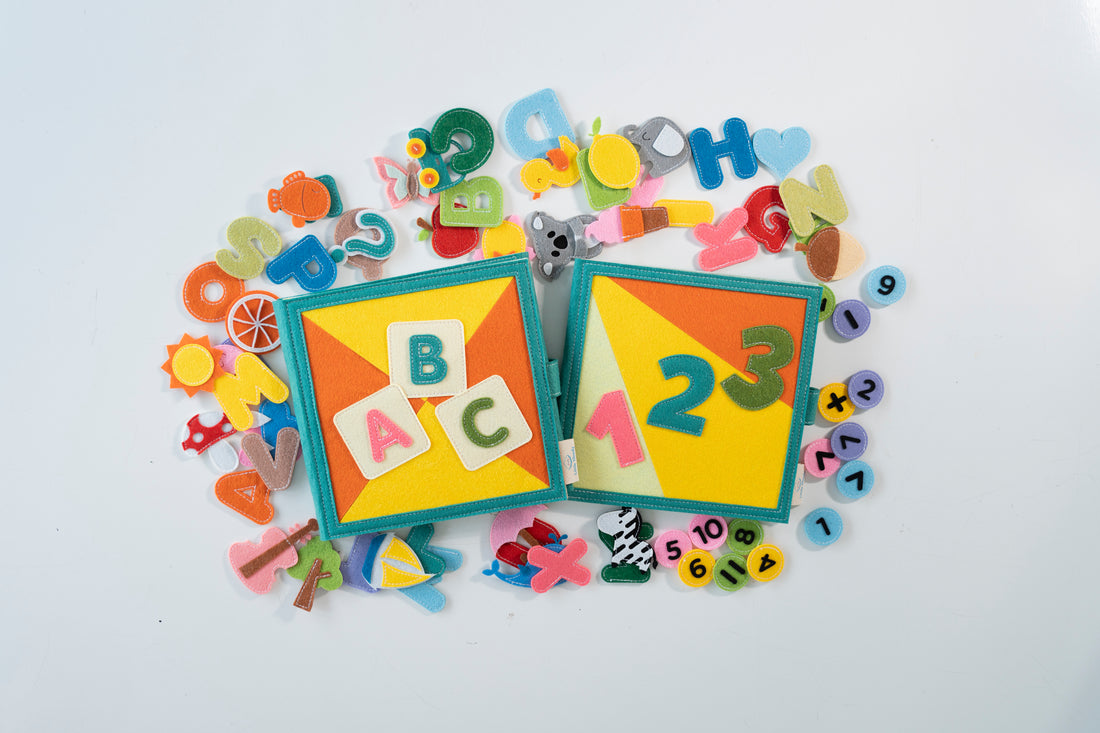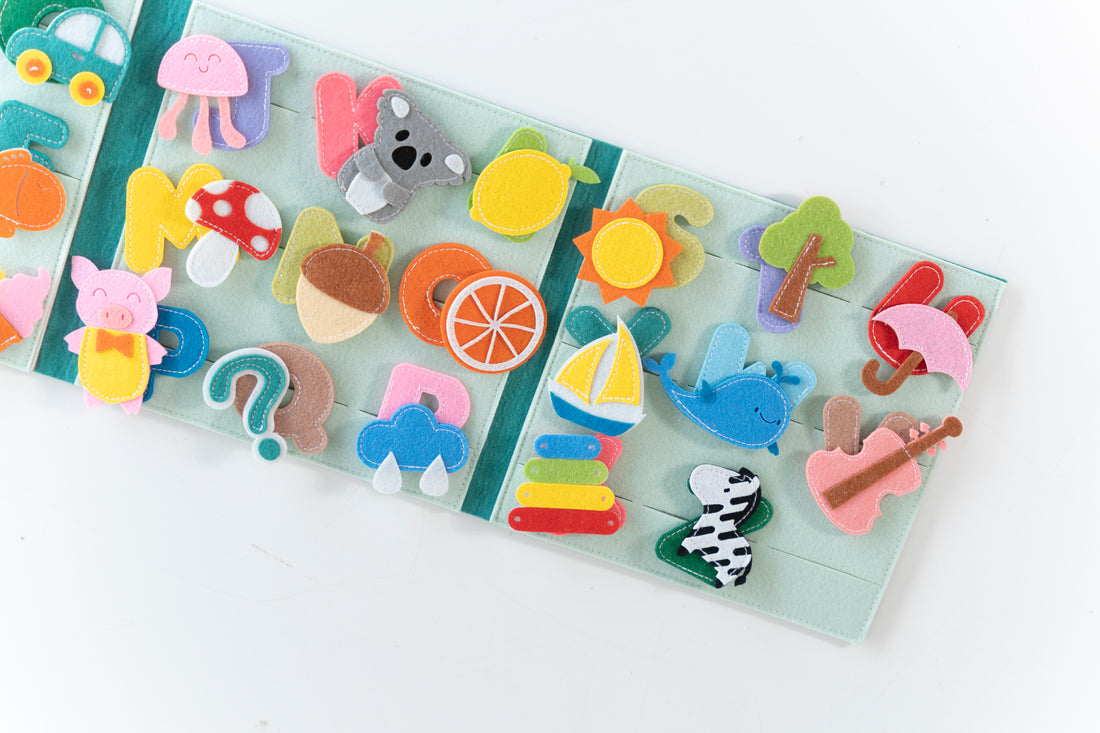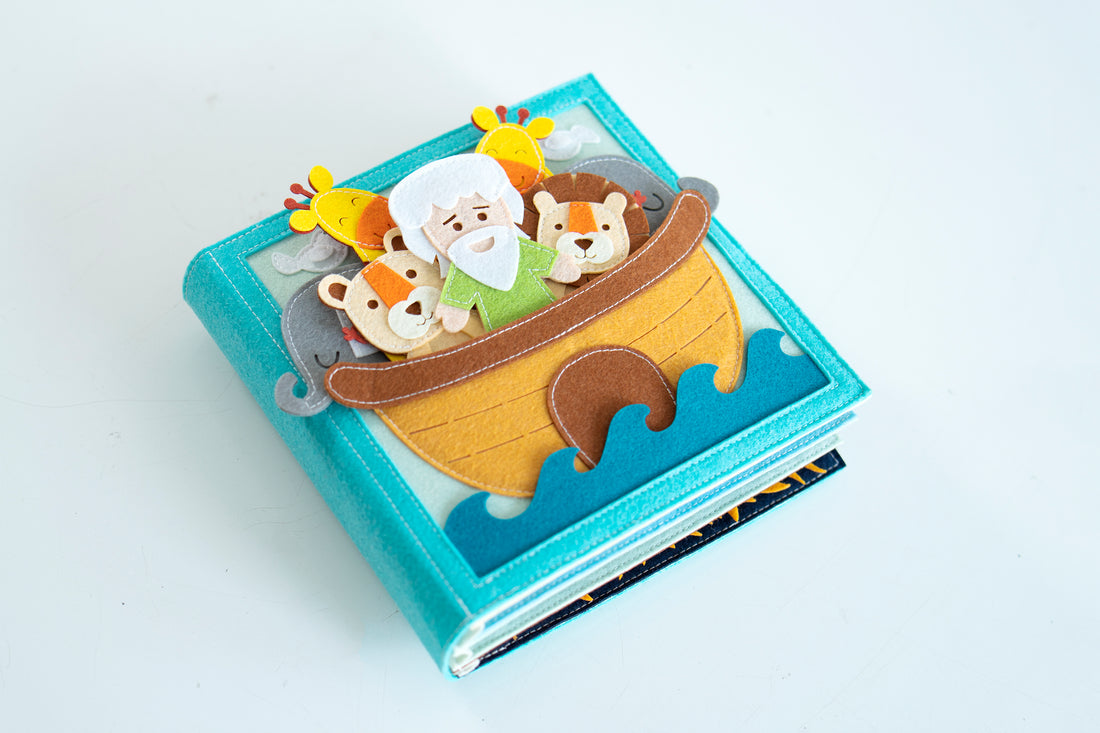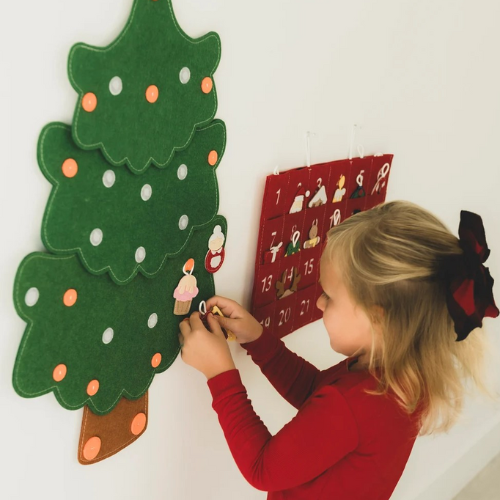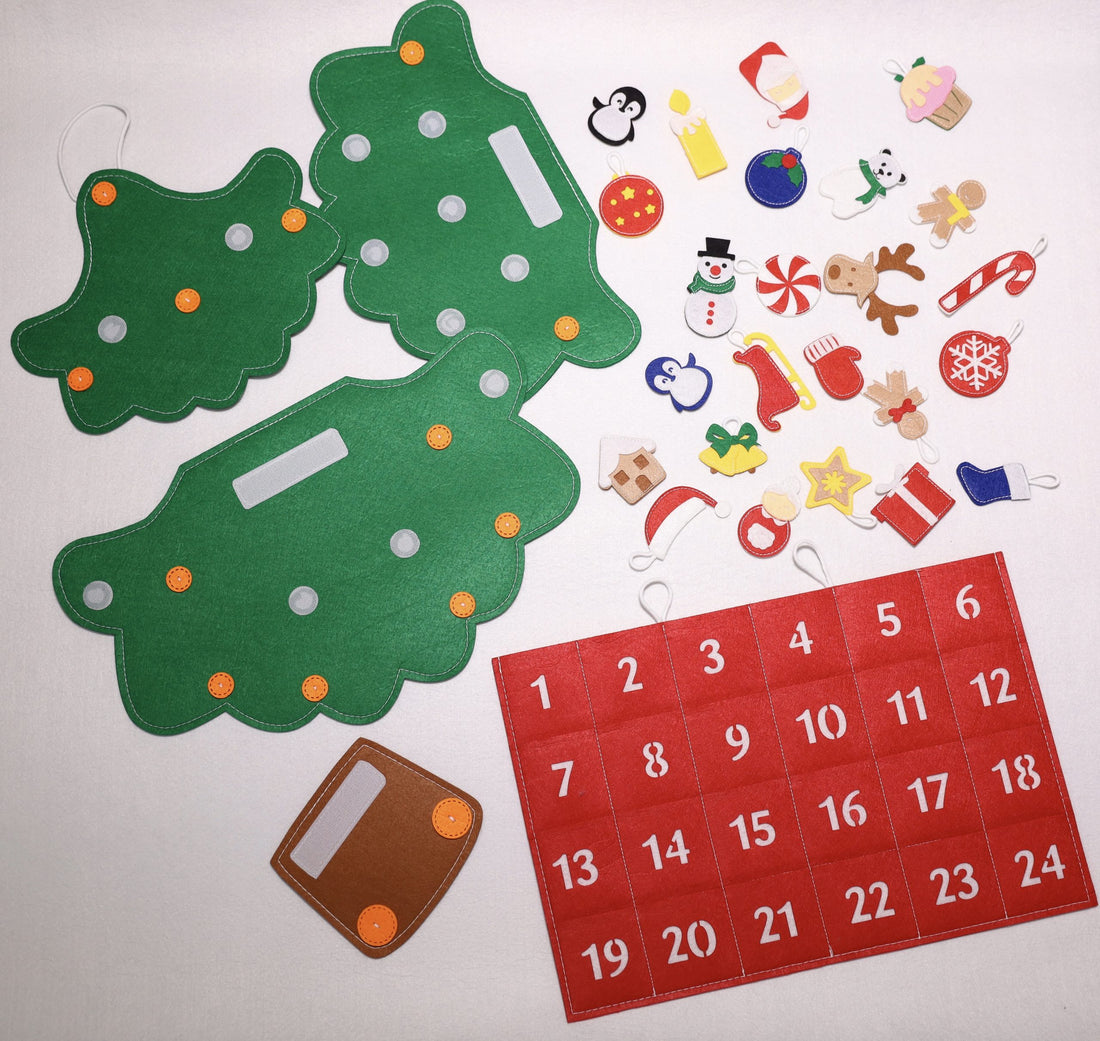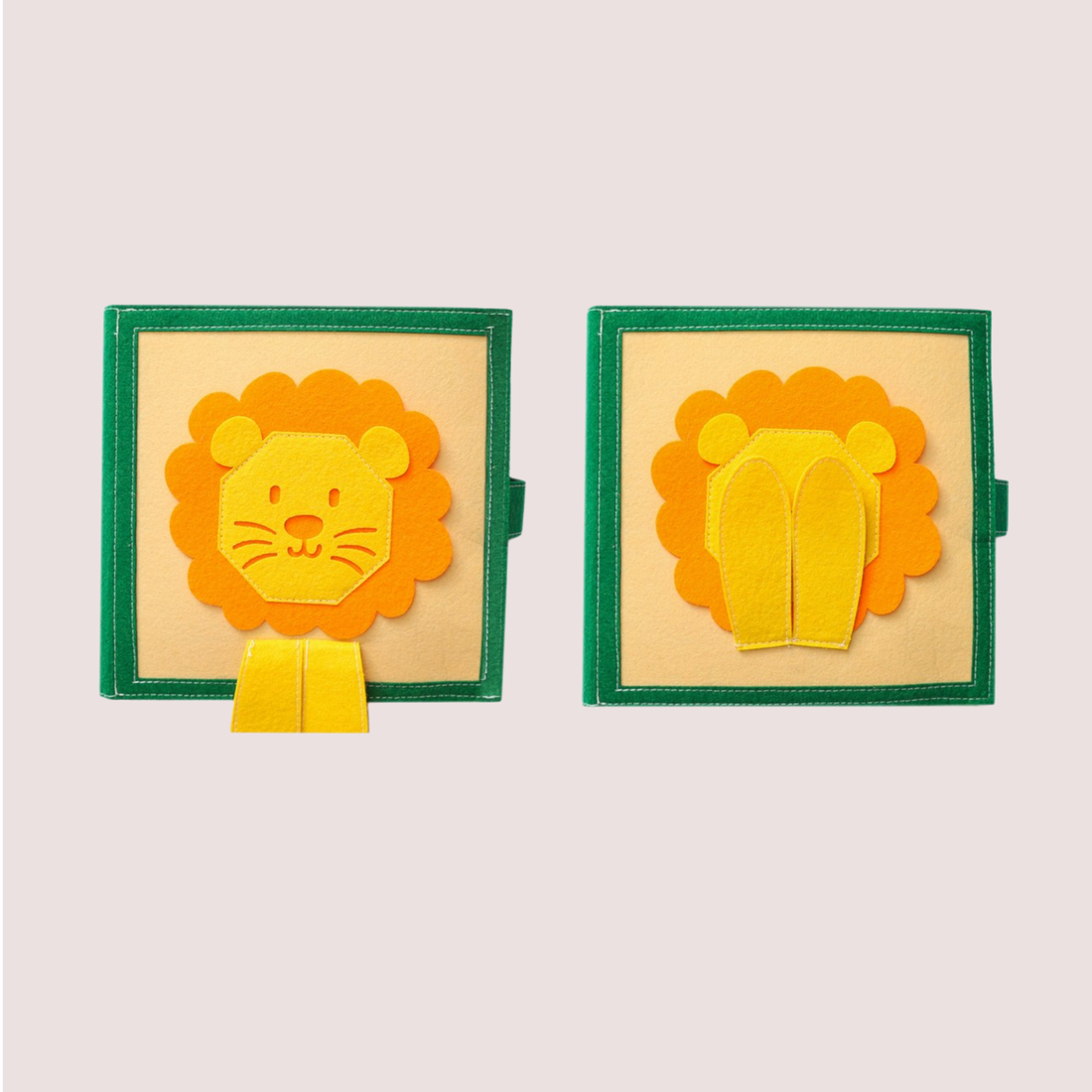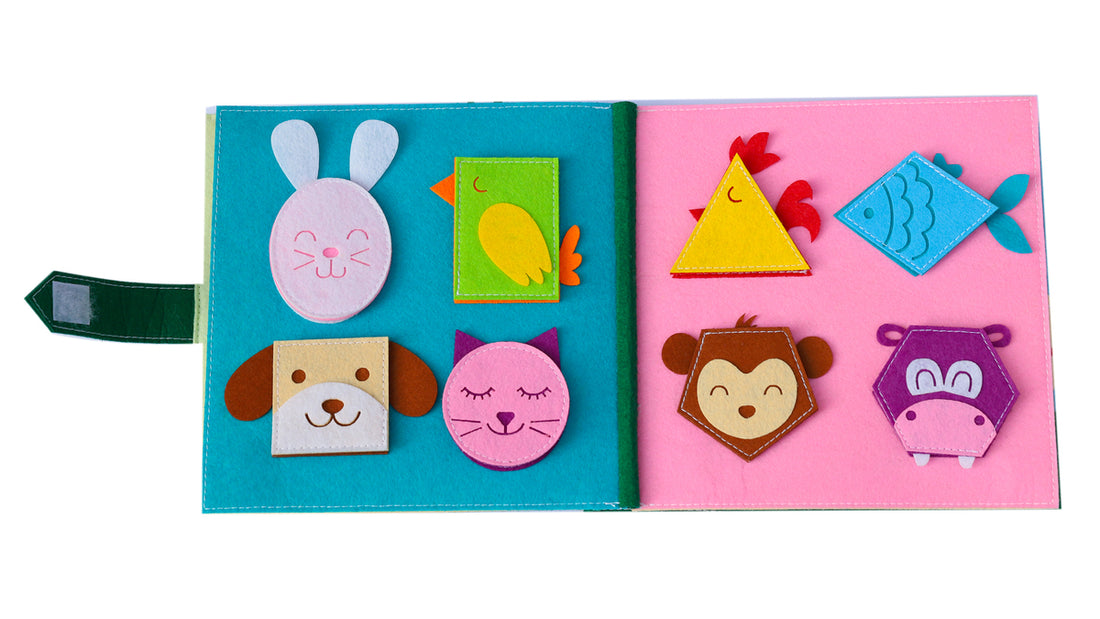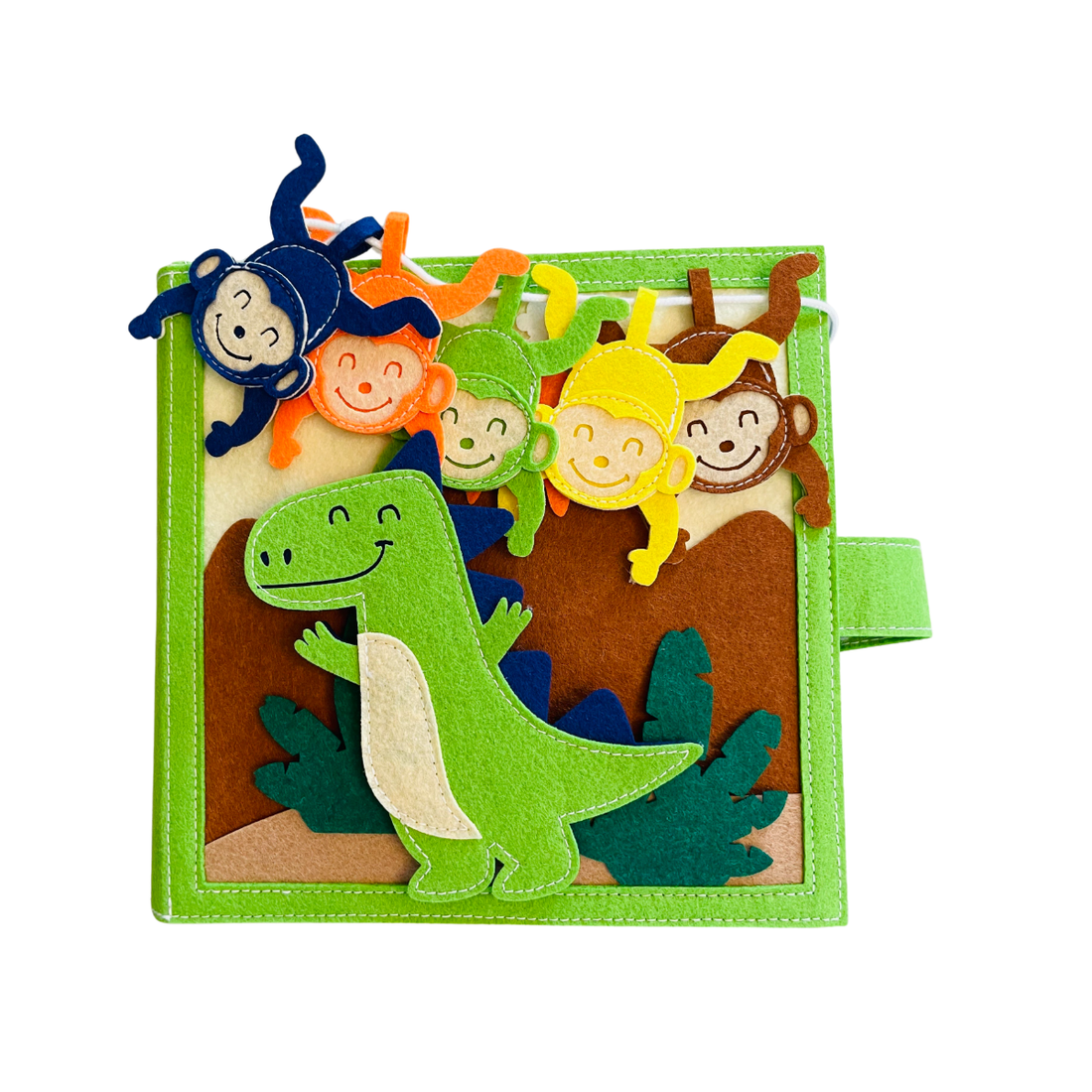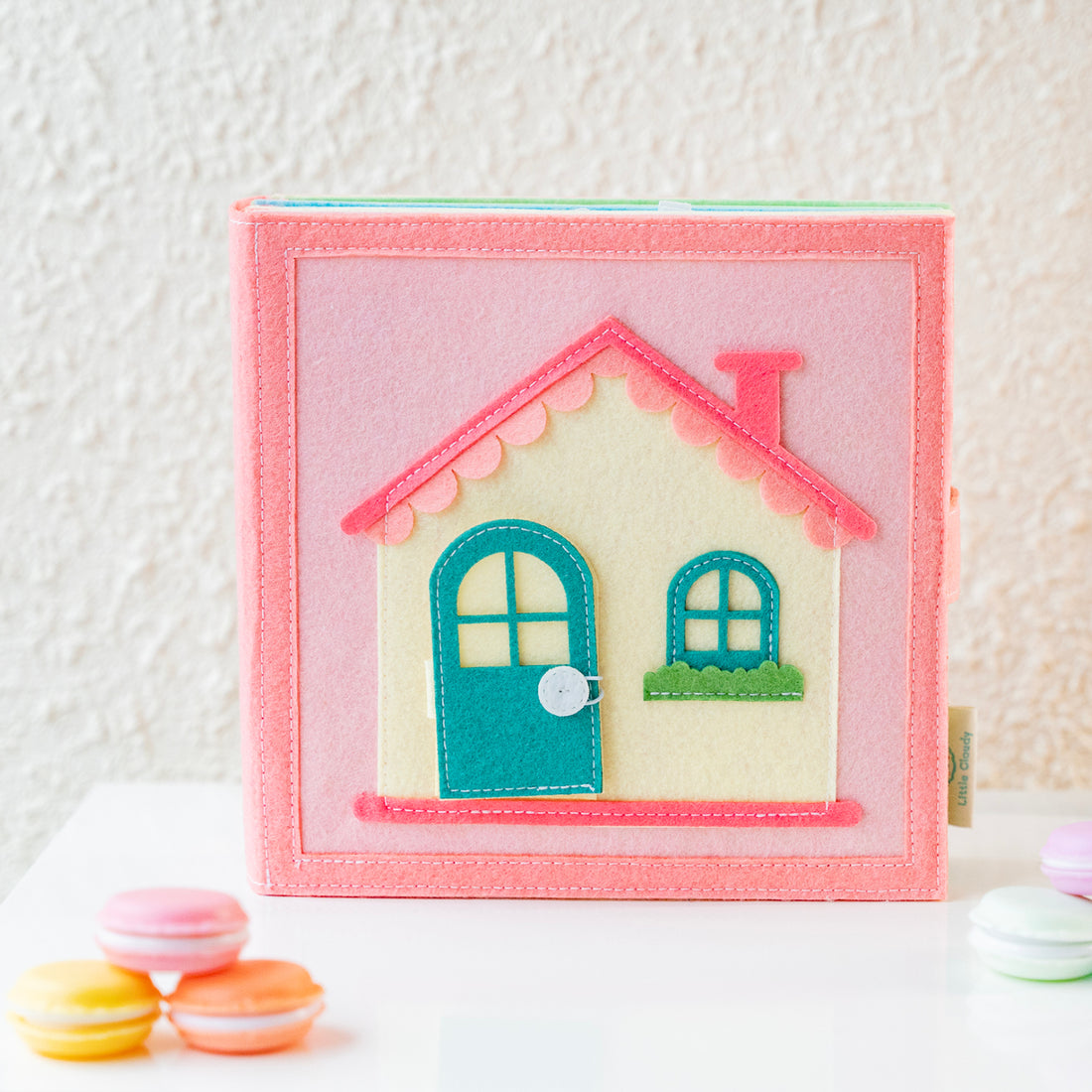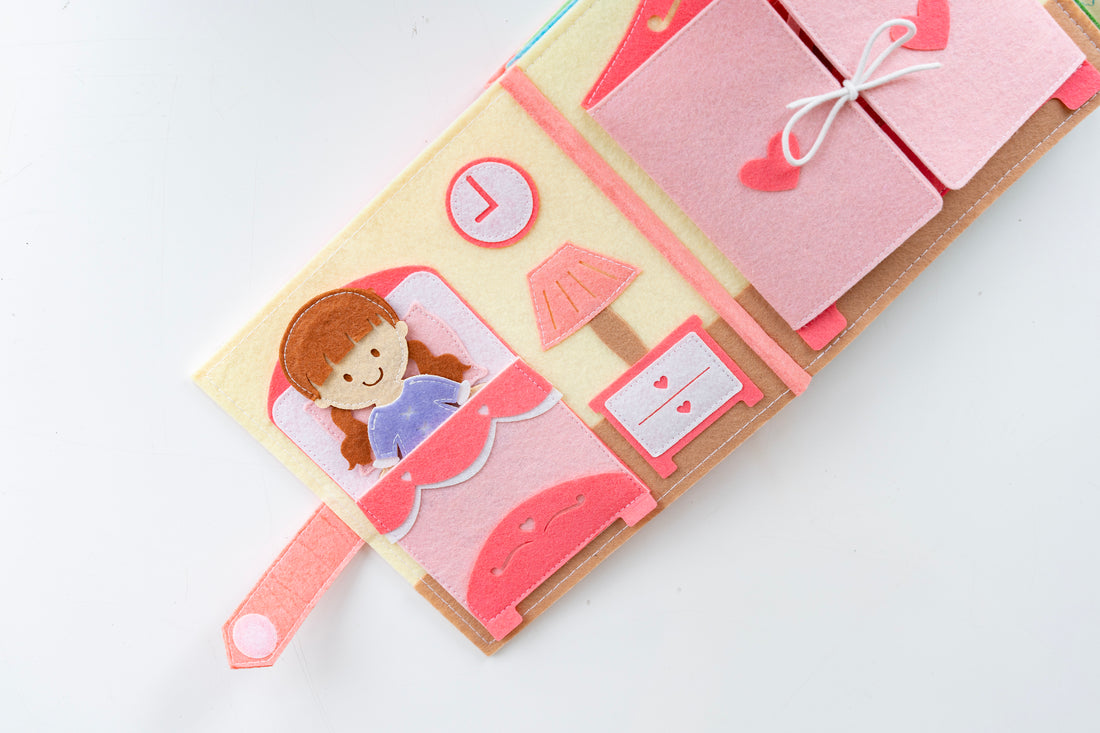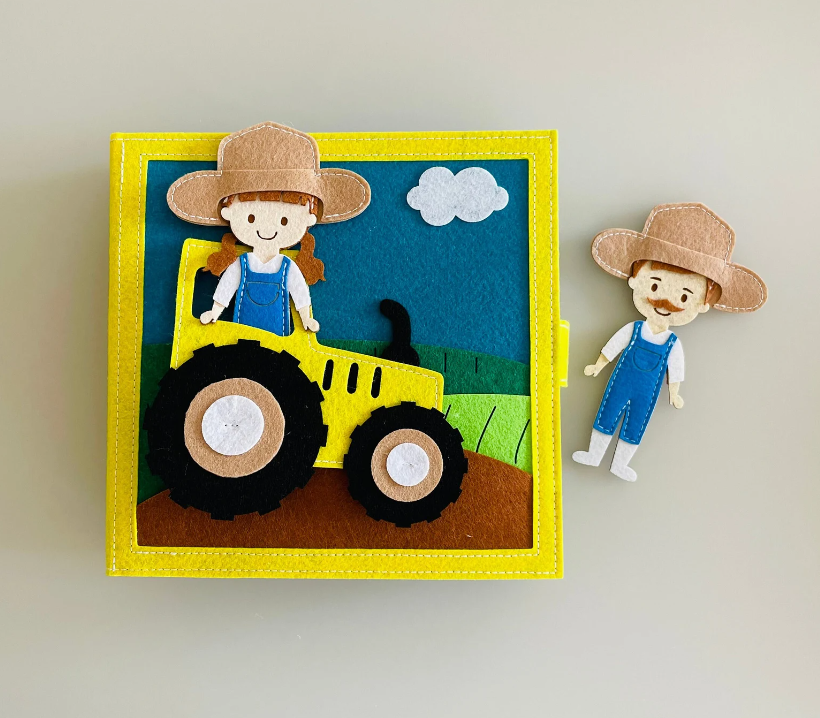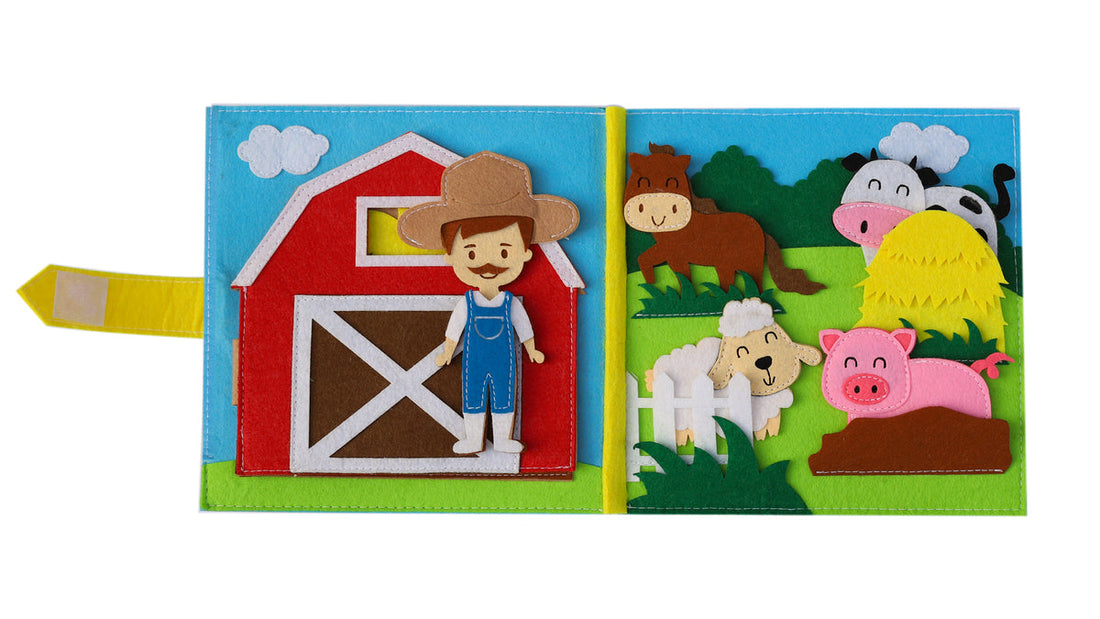Over the years, I've seen how quiet books can positively impact toddlers. They're not just fun; they're tools that boost sensory and cognitive skills, fine motor development, and emotional growth.
So, let's explore the benefits of quiet books and see how they can help shape our little ones into well-rounded individuals.
It's time we recognize these humble books as the developmental powerhouses they are.
- Quiet books provide sensory stimulation through textures, colors, and shapes, enhancing tactile senses.
- Engaging with quiet books promotes motor skills development and problem-solving skills.
- Spending quiet time with these books fosters focus, concentration, and emotional development.
- Quiet books offer cognitive advantages by boosting skills such as numeracy, literacy, problem-solving, language acquisition, and vocabulary expansion.
Understanding the Concept of Quiet Books
I've found that understanding the concept of quiet books is key to fully appreciating their benefits for toddler development. These are interactive, often handmade, fabric books designed to keep toddlers engaged in a calm and focused manner.Quiet Book Construction involves the use of various textures, colors, and shapes, all aiming to stimulate a child's senses while providing a unique learning experience. It's not just about sticking pieces together; it's about creating a beneficial tool for your child's growth.
Moreover, the Fabric Selection Importance in quiet books can't be overstated. The chosen materials can enhance or diminish the sensory experience. Soft fabrics soothe, while rougher ones stimulate. The right mix can significantly help in developing a toddler's tactile senses.
The Role of Quiet Books in Sensory Development
In my experience, these silent reading materials play a crucial part in enhancing a child's sensory abilities. Quiet books are a wonderful tool for tactile learning and sensory stimulation. These books facilitate active engagement and exploration, which are key in a child's development.- They offer various textures, shapes, and colors, stimulating a child's sense of touch and sight.
- Their interactive nature encourages motor skills development.
- Engaging with quiet books can help children develop problem-solving skills.
- The quiet time spent with these books can foster a child's ability to focus and concentrate.
- They can also aid in emotional development by providing a calming activity.
Through these attributes, quiet books support overall sensory development, making them an invaluable resource in a child's learning journey.
Cognitive Advantages of Using Quiet Books
There's a significant cognitive boost associated with these tactile learning tools, particularly in areas such as early numeracy, literacy, and problem-solving abilities.Quiet books serve as excellent resources for language acquisition, as they prompt children to identify objects, express their thoughts, and expand their vocabulary. They're also instrumental in memory enhancement.
The repeated interaction with the book's elements helps reinforce information retention in a child's memory.
As a child engages with the book, they're not just having fun, they're also developing essential cognitive skills.
Quiet books, therefore, offer a unique blend of education and entertainment, making them an invaluable tool for a toddler's comprehensive development.
They're more than just books; they're stepping stones to a child's brighter future.
Quiet Books and Building Fine Motor Skills
My kid's fine motor skills have shown remarkable improvement since we started using these engaging and interactive learning tools. Quiet books have been instrumental in fostering creative exploration and interactive play, resulting in a significant boost in his coordination and dexterity.The joy of seeing my child successfully buttoning up a doll's shirt for the first time.
The pride when he meticulously laces up a tiny shoe.
The thrill of watching him explore the tactile pages with such fascination.
The happiness when he forms a perfect bow with the ribbons.
The amazement as he manipulates the tiny zippers with ease.
These quiet book experiences are more than just play. They're milestones, each one a testament to the power of interactive learning and my child's relentless determination.
Social-Emotional Growth Through Quiet Books
Watching my little one engage with these interactive learning tools, I've noticed a remarkable increase in his social-emotional growth. Quiet books, with their tactile and visually stimulating pages, have worked wonders in boosting his emotional intelligence. They've helped him understand emotions better, enhancing empathy.
Moreover, these books have also honed his problem-solving abilities. He's learning to approach and solve tasks independently, a vital skill for his age.
| Quiet Book Page | Emotional Intelligence Impact | Problem Solving Abilities |
| Buttoning page | Teaches patience & perseverance | Enhances fine motor skills |
| Zipper page | Builds focus & concentration | Encourages independent task completion |
| Color matching | Improves emotional identification | Develops cognitive abilities |
| Animal sounds | Boosts empathy & understanding | Sharpens memory |
| Shape sorter | Enhances spatial awareness | Promotes logical thinking |
Undoubtedly, quiet books are a great tool for fostering social-emotional growth in toddlers.
Frequently Asked Questions
What Are Some Recommended Quiet Books for Different Age Groups of Toddlers?
I'd recommend customizing quiet books according to your toddler's age. For the little ones, soft fabric materials work best, while older toddlers might enjoy more complex quiet book materials like buttons and zippers.
How Often Should My Toddler Interact With Quiet Books for Effective Results?
I'd recommend daily interaction with quiet books for optimal results. Incorporating various quiet book materials and personalizing them can significantly enhance your toddler's learning experience and cognitive development.Can Quiet Books Replace Other Forms of Learning and Development Tools for Toddlers?
No, quiet books shouldn't replace other learning tools for toddlers. They're great for sensory development impact and quiet book customization adds value, but a balanced mix of activities ensures well-rounded development.
Are There Any Negative Effects of Using Quiet Books Excessively?
I've found no direct negatives, but overdependence implications exist. Excessive use might lead to sensory stagnation, limiting exposure to varied learning tools. It's best to balance quiet books with other developmental activities.How Can I Incorporate Quiet Books Into My Toddler's Daily Routine for Maximum Benefits?
I'm incorporating quiet books into my toddler's routine by adding quiet book crafting. It enhances their sensory benefits by stimulating creativity and fine motor skills. We do this during quiet times, like after lunch or before bed.
Quiet books are an invaluable tool for your toddler's development. They stimulate sensory growth, enhance cognitive abilities, and help build fine motor skills.
Additionally, they foster social-emotional development, setting a strong foundation for your child's future.
So, don't underestimate these simple yet powerful educational tools. They're much more than just a quiet time activity, they're a stepping stone to your child's holistic growth and development.
